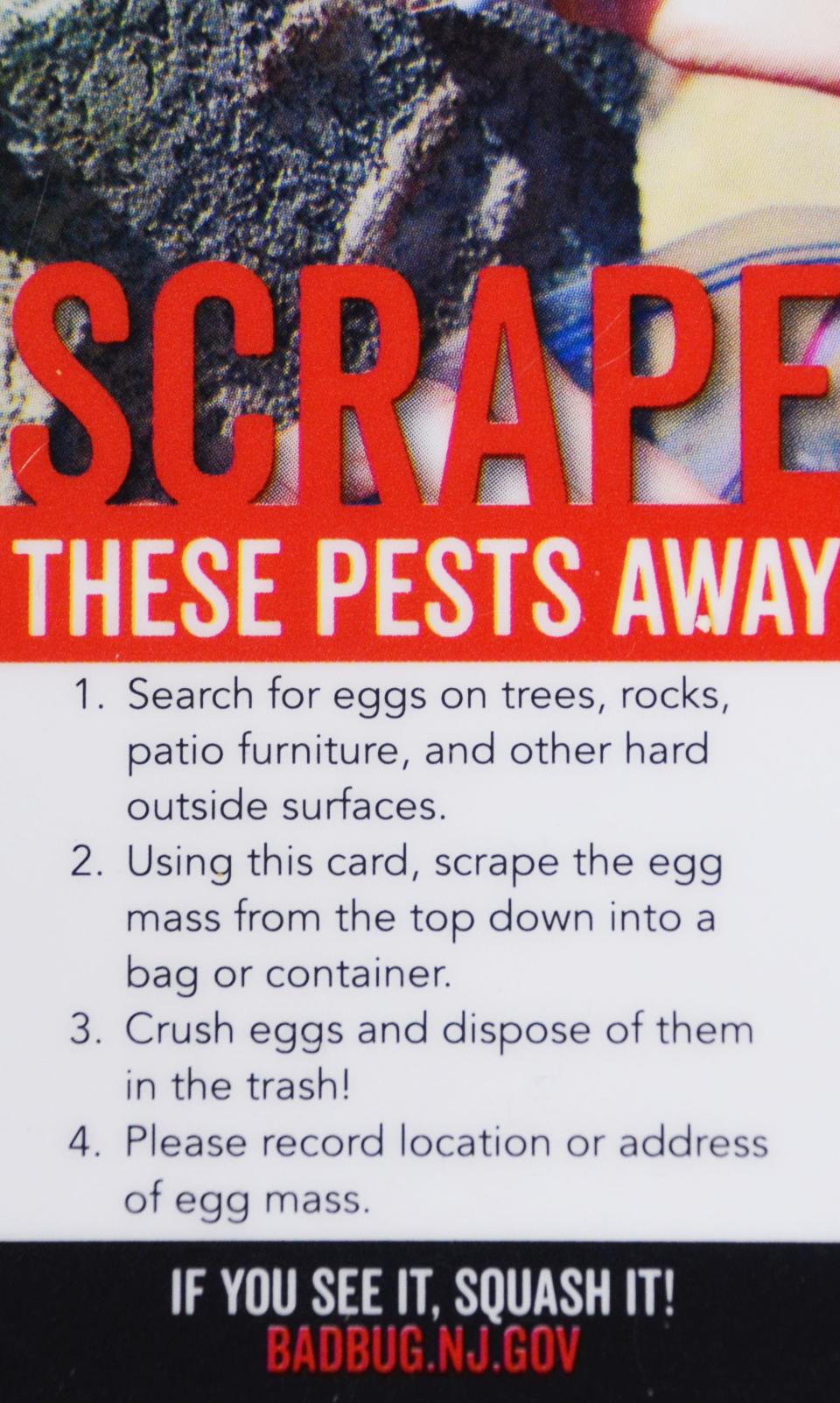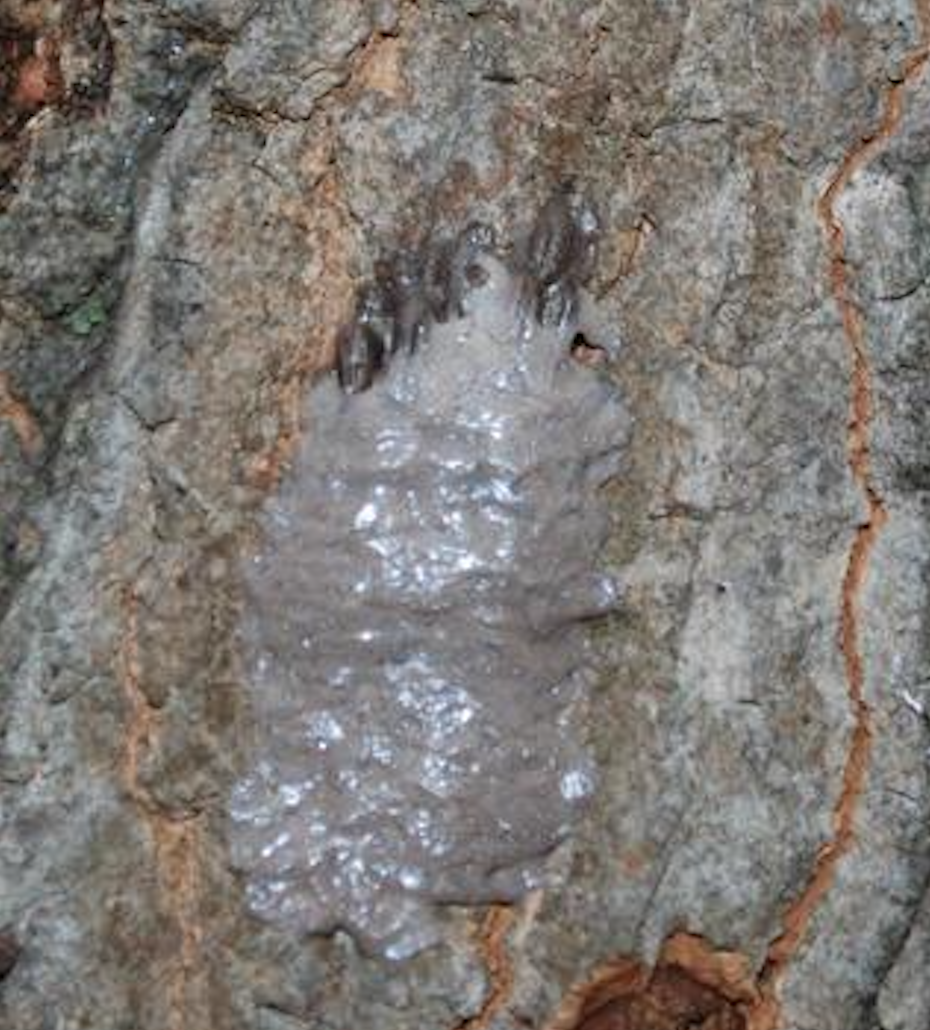These NJ counties are under quarantine as 'invasive' spotted lanternfly returns
Get ready for another scrape with the dreaded spotted lanternfly, New Jersey.
Thirteen counties remain under quarantine as the Garden State braces for another summer invasion of the colorful-but-invasive bug, frequently seen swarming trees and fields last year from the Delaware Water Gap to the Delaware border.
With egg sacks hatching in May and June, experts say, the invasive bugs should begin showing up soon as nymphs and can be identified by white spots on a small black body.

"The nymphs may be found in large numbers on a wide range of hosts including landscape trees," experts at the Rutgers Cooperative Extension advised.
By early summer, the bodies begin to turn bright red while the spots remain. Later in the summer, they use their distinctive spotted wings to travel and lay eggs.
Native to Southeast Asia, the invasive pest is believed to have hitchhiked to Pennsylvania attached to wooden packing crates or skids. It was first discovered in New Jersey in 2018 and in New York in 2020.
Although the colorful bug is no threat to humans or animals, it is known to feed on 70 types of plants and trees, potentially causing extensive and expensive damage.
The accelerated spread of the bug in New Jersey last year caught the attention of the state Department of Agriculture. Quarantines established in 13 counties last year have been carried over to this year.
Counties still under the spotted lanternfly quarantine are Burlington, Camden, Essex, Gloucester, Hunterdon, Mercer, Morris, Monmouth, Middlesex, Salem, Somerset, Union and Warren.
The Agriculture Department's clarion call is printed on plastic scraper cards being distributed through the Rutgers Cooperative Extension: "Scrape these pests away" and "If you see it, squash it!"
The scraper cards can be used to scrape off lanternfly egg masses from trees before they hatch. But by now, the eggs have hatched. So reporting and squishing is the current priority.
Specimens of any life stage can be turned in to the Department of Agriculture’s lab for verification. A photograph of any life stage (including egg masses) can be submitted to SLF-plantindustry@ag.nj.gov.
If you can’t take a specimen or photograph, call the New Jersey Spotted Lanternfly Hotline at 833-223-2840 (BADBUG0) and leave a message detailing your sighting and contact information.
Year-round battle
The fall frost last year killed off the 2021 summer invasion, but 20 state crews continued to combat the spotted lanternfly.
"Since November, our crews have scraped approximately 200,000 egg masses," an Agriculture Department spokesperson said.

From last year: NJ squashed thousands of spotted lanternflies. Still, it's 'impossible to wipe them out'
Spotted lanternflies looking to feed tend to favor cultivated and wild grapes, fruit trees and hardwood trees common in woodlots and as landscape plantings, according to Rutgers' New Jersey Agricultural Experiment Station.
During feeding, the bugs excrete significant amounts of honeydew, or sugar water. Honeydew deposits provide a food source for a sooty mold fungus that can grow on plant surfaces and fruit, leading to reduced photosynthesis and plant vigor.
So far, the bug has not caused significant damage, the Agriculture Department said.
"While there was some spread last year, especially in locations where there was high traffic volume and in residential areas, there was no measurable damage to agricultural crops in 2021," the department spokesperson said.
County quarantines
But the threat of damage remains, as does the call for residents to enlist in the battle.
“We are targeting areas where severe infestations have been confirmed, and we also encourage residents to destroy the spotted lanternfly if possible when they see it.,” New Jersey Agriculture Secretary Douglas Fisher said last year. "It will take a combined effort to help keep this pest from spreading.”
Businesses operating in the quarantine zones in New Jersey and surrounding counties must have permits to move equipment and goods within and out of the zone.
"The spring shipping season is upon us, and spotted lanternfly should be one of your top concerns," reads a March 9 advisory on the Rutgers website.
People and businesses traveling in and out of these counties should inspect vehicles for hitchhiking lanternflies and inspect outdoor items such as packing bins, firewood, paving stones and lawn equipment for egg masses.

"Even though you may disagree with these measures, be advised that it remains within the discretion of any state to impose crippling load-by-load phytosanitary requirements on future deliveries," the advisory reads. "Load-rejections that occurred last fall underscore the seriousness of the spotted lanternfly situation and the far-reaching impact it might have on your business and the New Jersey industry at large."
This article originally appeared on Morristown Daily Record: Spotted lanternfly quarantine in NJ issued for 13 counties

